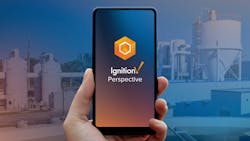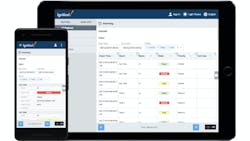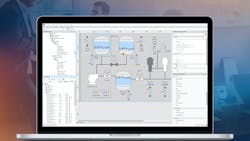Rather than adapt to mobility, Cox says Inductive Automation built the first truly mobile-first SCADA solution. Their solution, the Ignition Perspective Module, can run on any major operating system, including natively on iOS and Android with their app. The application works on any device with a web browser, is fully HTML5 and CSS3 compliant and does not require Java installation or plug-ins. Perspective also works together with other Ignition modules like the Vision Module. A new version of Perspective for workstations will also be released soon.
“There are no other products out there that allow you to develop any kind of application that is pure-web, in HTML5, mobile-first and mobile-responsive,” Cox says.
McLaughlin has worked with the Ignition platform for the past decade and began working with Perspective when it was in its beta version. He says he uses Perspective now for all of his Ignition development, having completely transitioned from Ignition’s Vision Module. By using Perspective, McLaughlin says he can design screens more easily and efficiently regardless of their size or resolution.
“(With Perspective), I don’t even ask people what resolution this is going to be in. It doesn't matter, because it’s automatically doing it,” McLaughlin says. “Whether you have a giant screen or a laptop with terrible resolution, you don’t have to design screens differently. Everything is mobile-responsive no matter who the user is.”
In addition to offering a common user experience regardless of screen or device, a mobile solution allows users to leverage their mobile device’s sensors, including GPS. Bluetooth, camera, barcode scanner, touch gestures and accelerometer.
“It’s awkward to take a photo with your laptop, but it’s really easy to do with your phone or tablet,” McLaughlin says. “All of a sudden, service forms or maintenance-related stuff like trouble tickets and notes, you can include pictures with it. Related information and trends can all be auto-populated from a barcode scan.”





